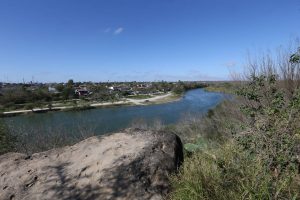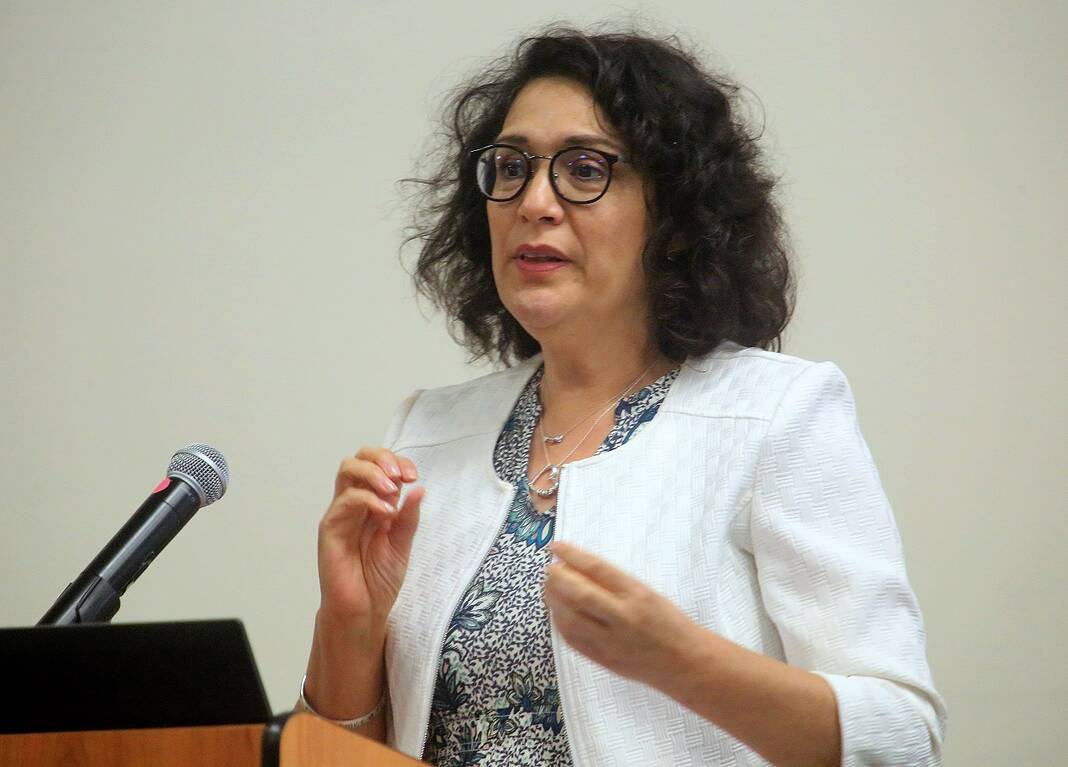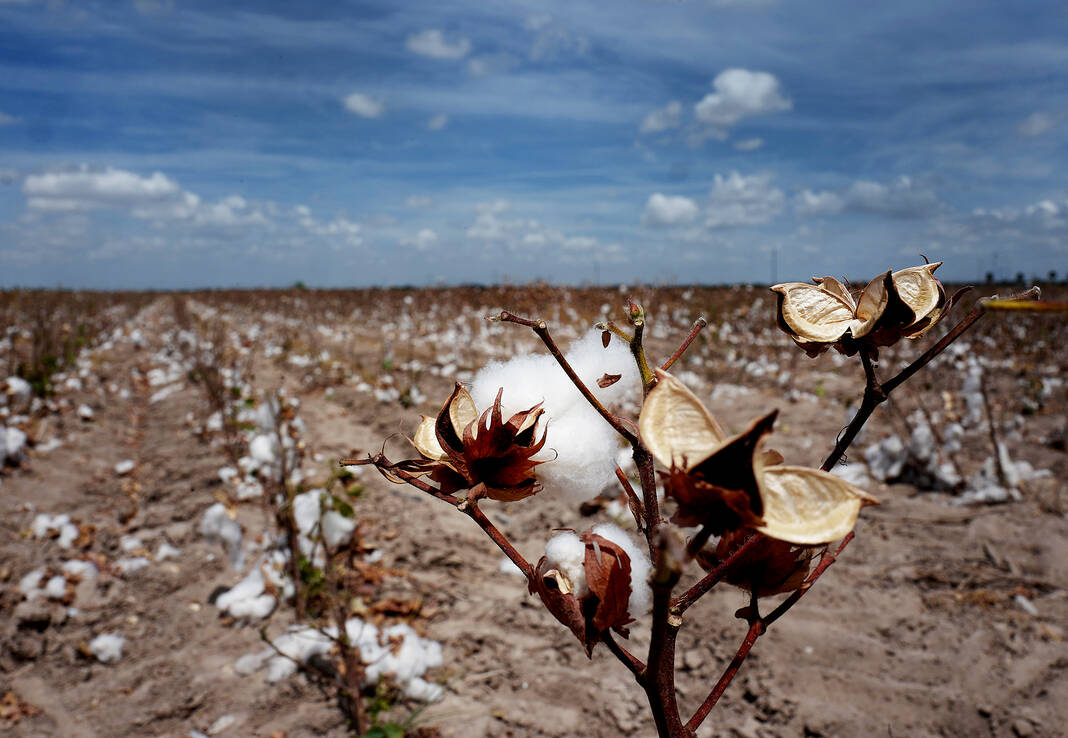
WESLACO — The water crisis is here.
And as water levels at Falcon and Amistad international reservoirs continue to plummet, officials are calling the burgeoning water crisis “terrifying,” “urgent,” and “dire.”
“I don’t want to speculate,” Bobby Janecka, commissioner of the Texas Commission on Environmental Quality, said when asked what he thought the water situation in the Rio Grande Valley would look like over the next 30, 60 or 90 days.
“I’m too worried, frankly, about how dire and how quickly it may start to dry up as we see municipal water requiring more and more to get the same amount of water to its users. I think that that situation is only terrifying,” Janecka said.
The commissioner was speaking after a joint meeting between the TCEQ and several federal agencies, including the Bureau of Reclamation and the U.S. Department of Agriculture.
The meeting was hosted by the International Boundary and Water Commission in order to discuss various federal funding programs aimed at promoting water conservation efforts or improving local water and wastewater infrastructure.
In the audience, a number of stakeholders paid rapt attention, including representatives from the Valley’s farming industry, as well as leaders from local irrigation and water districts.
But as the meeting progressed, an undercurrent of urgency rippled over the ever diminishing levels of water available to the Valley.
Indeed, water scarcity topped the introductory remarks made by both Janecka and Maria-Elena Giner, commissioner of the IBWC.

“We’ve already had communities contacting us with regards to not having intakes deep enough into the lake to take water,” Giner said.
“So, impact is coming very quickly,” she said.
Giner was referring to pipes that normally jut out into the depths of Falcon Lake that allow for water to be pumped for consumer use. But, as the lake level has plummeted, the water line has receded, leaving those pipes exposed to open air and unable to draw water.
It’s a scene reminiscent of similar headlines describing the fast-paced shrinkage of Lake Mead, which is the largest manmade reservoir in the United States. Straddling Arizona and Nevada just east of Las Vegas, Lake Mead supplies fresh water to more than 25 million people across seven states and northern Mexico.
Janecka mentioned the crisis at Lake Mead, saying that the headlines generated by the water crisis there will soon be seen here, especially given the rapidity with which the Valley is approaching critical water scarcity.
Already, the region’s agricultural users have been feeling the impact of those dwindling reservoir levels.
“We’re well into the next chapter of this urgency of drought where irrigation users have really been subject of the past several months from curtailments and cuts and ‘sorry the water’s not there,’” Janecka said.
“That horrible reality is now about to expand and our municipal, our industrial, and our domestic users are now going to need to be prepared to face those sorts of curtailments and those tough calls from our watermaster,” he said.
Water levels at Falcon International Reservoir have fallen below 12% capacity as of the most recent report in early July, while further north, levels at Amistad International Reservoir are hovering around 23%.
As Giner explained, the bulk of the Valley’s water — some 70% — comes from the Rio Grande. But the majority of the river’s watershed lies across the border in the Mexican mountains of Chihuahua.
The United States has a water sharing treaty with Mexico that outlines how the precious resource should be divvied up across two major waterways — the Rio Grande in Texas, and the Colorado River, which supplies Lake Mead.
That 1944 treaty requires, in part, that Mexico pay the U.S. water from the six tributaries that feed the Rio Grande.
Mexico is required to deliver some 1.75 million acre feet of water over the course of five years, for an average of about 350,000 acre feet per year.
But the existing drought has meant that Mexico has defaulted or nearly defaulted during the last two cycles. And it has already fallen behind in the current cycle, too, which began on Oct. 27, 2020.
Two years into the current cycle, Mexico has delivered just 14% of the water it owes the U.S., Giner said.
Treaty or no treaty, Mexico simply doesn’t have the water to give.
“I don’t know if I can emphasize enough how dire and urgent it really is,” Janecka said, referring to the water delivery shortfalls.
But officials are working to find solutions — including obtaining a hydrological model from the IBWC’s Mexican counterparts, La Comisión Internacional de Límites y Aguas, for the first time ever.
The IBWC got the model in March and has since been working to calibrate its own data with the model in preparation for “running some scenarios on water deliveries and how they benefit the Rio Grande and how they benefit Mexico in terms of meeting their water allocations,” Giner said.
Janecka, the TCEQ commissioner, was optimistic about what the Mexican model means for U.S. water scientists.
“That will finally give us a solid basis to begin to try to understand and do a shared water planning across a truly binational basis in a truly different way,” Janecka said.
Nonetheless, these efforts to more efficiently use water didn’t come about until recently.
They began well after the drought began to have profound effects in Mexico and after Mexico came perilously close to violating the 1944 water treaty — twice.
As a result, Janecka admitted that whatever measures officials make today — whatever urgency the looming crisis has fostered — will have little impact in staving off current water scarcity.
“There’s nothing about that success that will bring any relief to create water for people needing it today,” Janecka said.
“I think there’s a lot of urgency that’s developing around the issue, and I’m really pleased and encouraged by it, but there’s still far too much work to do and far too little time to do it.”





